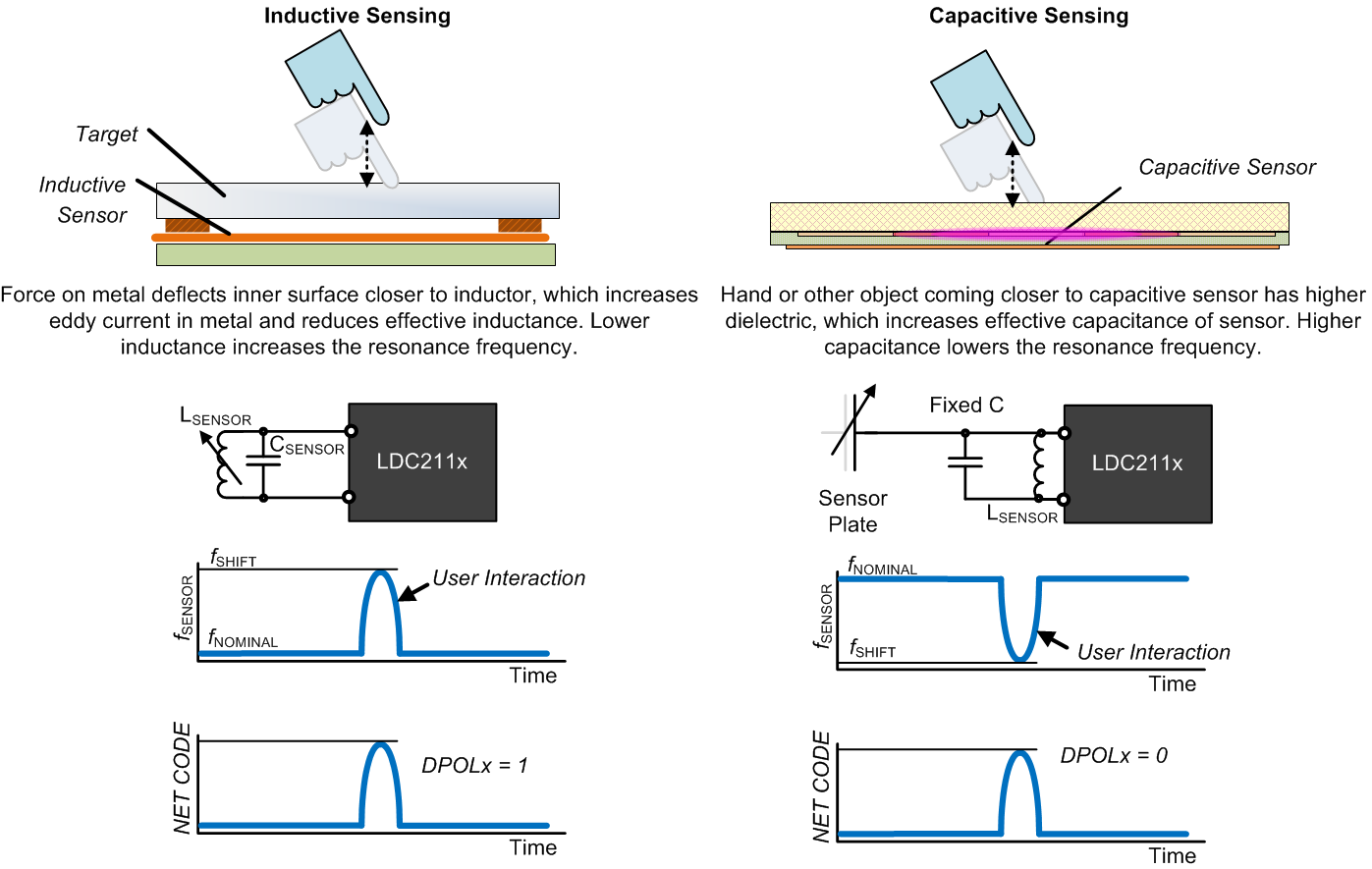SNOA993A June 2018 – July 2021 LDC2112 , LDC2114 , LDC3114 , LDC3114-Q1
3 Data Polarity and Timeout
The LDC211x and LDC3114 can detect positive or negative frequency shifts as button events. This is controlled per channel by the DPOLx setting, which adjusts the polarity of data processing. Figure 3-1 shows how this can be configured to support either inductive or capacitive sensing by the same device, or even a combination where some buttons operate as inductive sensors and the others operate as capacitive sensors. For a capacitive sensor, setting DPOLx to 0 inverts the sign of the internal data processing. This results in a signal which operates in the same sign as an inductive sensor, and so all other internal algorithms operate consistently.
 Figure 3-1 DPOLx functionality with Inductive and Capacitive Sensing
Figure 3-1 DPOLx functionality with Inductive and Capacitive Sensing